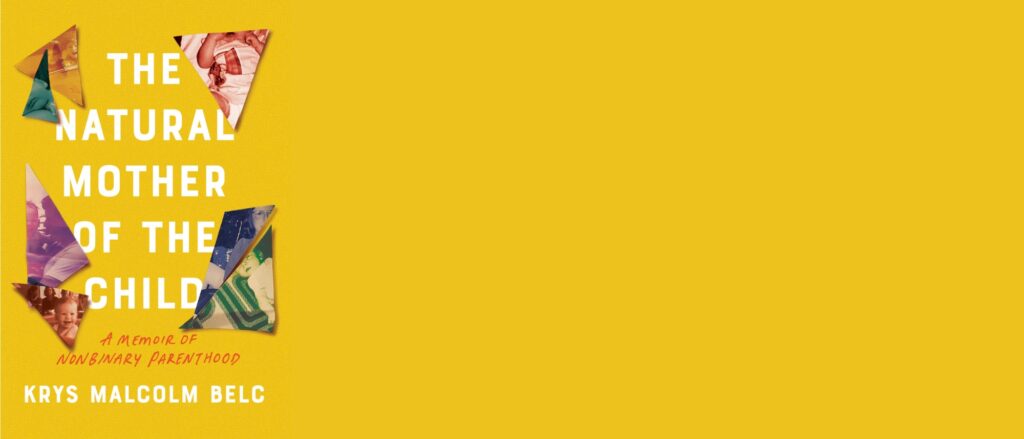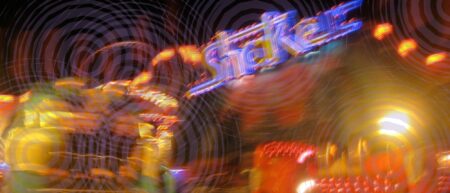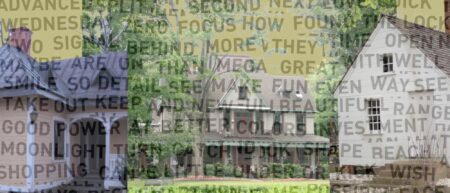I stand in line at the pharmacy and wait my turn. I can see that the regular pharmacist is in, but there is a new associate helping customers. I dread the exchange that will inevitably take place when I finally reach the counter. I like it when the curly-haired, soft, motherly pharmacy associate helps me. She doesn’t make me repeat my child’s deadname. She remembers it and asks only for a birthdate to confirm that she’s looking at the right one of my four children in the computer system. I appreciate this small mercy. Obtaining a vial of testosterone in this sleepy mountain town is not an anonymous task.
We’d initially filled the prescription at the specialty gender clinic in a city an hour and a half away, the same day we were taught about safe injection technique and my 15-year-old self-administered their first testosterone dose. I have a photo of that moment, relief and joyous disbelief and something else — peace — on my child’s face, spilling out from the corners of their smile. Eventually, I had to bring the prescription to the national pharmacy chain next to my local grocery store. There was explaining to do, identification to show, pronouns and deadnames to trip over. In the time since, the friendly associate has researched needle types and sizes to procure the style my kid prefers, answered questions about insurance coverage and sharps disposal, and personally called competing pharmacies to locate the correct testosterone suspension when it couldn’t be ordered in her store. She quickly noticed my use of pronouns in our discussions and she uses the correct ones, every time. Every time. I am grateful for this much greater mercy, a true and easy kindness in a world that seems intent on forcing my nonbinary child’s obedient conformity.
Today, the kind associate is not here, and I worry. I worry, and I thank the universe that my child, whose body is always a question, isn’t with me on this errand. We are bound up in this — the journey of transition, an act of becoming — as we were once bound when this child was growing inside me. They do not need to, once again, bear witness to the probing questions of strangers who see only the facts of the body and not the nuance of personhood.
Krys Malcom Belc understands the questions demanded of a nonbinary body, a body that defies categories or moves among them. In his memoir, The Natural Mother of the Child, Belc takes us on a journey intent on the facts of his body. Through essays and artifacts, Belc chronicles his childhood in Rockaway Beach, NY; his college years when he met his wife Anna; and his early adulthood as a parent who carried one of the couple’s three children. It is this act — carrying and giving birth to his son Samson — that ultimately confirms a fact Belc has always known and has been tentatively stepping toward throughout his life: he is not a woman.

His memoir is a masterclass in nonconformity, taking readers through a reflection on his own understanding of his gender and his body. It begins with the story of when, as a five-year-old, Belc simply stood on stage as the music played for a dance performance, the audience “waiting for me to do what I’m supposed to do.” He proceeds through life pushing the boundaries of conformity, often to the detriment of his mental and physical health. As Belc considers the various iterations of his gender presentation, he holds our hands and helps us understand that his journey is anchored around this understanding: “Some people may have been born in the wrong body; I was not. I was born in a body that gave me the freedom to carry a baby….”
Books by and about gender diverse people are slowly making their way to the fronts of bookstores and the tops of internet search results, but they are published infrequently. Rarely have I found a memoir as wide-ranging as Belc’s, one that, rather than focusing on an explicit move from one gender to another, explores the spectrum of a gender identity and what it means to move through the world and through relationships as your understanding of your own body shifts. In The Natural Mother of the Child, Belc considers his life through the lens of wisdom, after Samson’s birth, after he’s been on testosterone, after he’s researched top surgery. He has moved through the liminal space of pregnancy and childbirth, now inextricably linked to the boy he made and grew with his body, and landed squarely on transmasculinity. The kids are older and Belc’s family — which started as a same-sex partnership, navigated a system that required each to adopt the other’s biological children, and underwent Belc’s transition together — now presents as heteronormative, “No one asks anymore. We are just a mom and a dad and some kids.” He juxtaposes birth certificates, photos, and court documents that insist upon his female identity with essayistic chapters exploring fatherhood, anger, breasts, adoption, and marriage, reconciling the paper trail of his life.
Before the paper trail of my child’s life aligned with their authentic self, my child didn’t have the language to explain the discord between body and mind. They could not recognize the person in the mirror, and they were unrecognizable to me. My once playful and dynamic child receded. They were unmoored, adrift, seeking. Before trips to the pharmacy every few months for testosterone, there were trips to the pharmacy for medications to help with the maelstrom inside my child’s head. Those early prescription labels bore a different name, one that has faded into the recesses of my mind. Before testosterone, my child’s gender left the people who knew them wondering.
Before Belc had the language to articulate his understanding of his gender, he, too, existed in the in-between, in a body that was “not quite man, not quite woman, but with the parts to create and shape life.” And at no point in life is the body more on display than when it is pushed to its limits during a pregnancy. Every person who has been pregnant knows that strangers will feel an entitlement to your body, as if it is suddenly a communal thing. They will want to know how far along you are, if they can touch your belly, whether you know the sex of the baby. Long before birth, we foster a culture that enables a sense of entitlement to others’ gender identity, as every nonbinary or trans person can attest. Why this need to categorize, to define? Belc puzzles through the personal meaning of that question in The Natural Mother of the Child, providing readers with a real-life accounting of the evolution of his transmasculine identity and what it means to traverse both sides of the gender binary while embracing, though not particularly enjoying, experiences as deeply enmeshed with womanhood as pregnancy, childbirth, and breastfeeding.
The pain of being a nonbinary person occupying traditionally female spaces, such as the obstetrician’s office or the ultrasound examining room, is acute in Belc’s refusal of a bevy of invasive tests that go along with pregnancy management. “People like me don’t get pelvic exams unless under the threat of something,” Belc writes, “I didn’t want to see those parts — women’s parts — and know they were abnormal, or normal, or even there.” This particular scrutiny and the physical changes of pregnancy lead Belc to consider how he will relate to this new life: that of the baby he is carrying as well as life as a gestational parent — traditionally a mother, which he is not. Belc thoughtfully asks of himself and of society, what makes a mother, and why, pushing into the question of whether the act of growing a human is or must be intrinsically female, noting, “Nothing about being pregnant made me feel feminine.”
If pregnancy changes a person, which it invariably does, it changed Belc’s understanding of himself and what he needed to be the most authentic version of himself. Belc weaned Samson and pursued testosterone therapy two years after giving birth, yet even as his appearance grew increasingly masculine, he was surprised by his children’s perceptions of who he is. Samson, a boy at ease in sparkly shoes and rainbow skirts and suits of armor, points out a way in which he is similar to his dad, as children often do in search of themselves in their parents. “It’s good that your mom is the type of mom who let you wear dresses,” Samson says, “even though you were a boy.” Belc corrects him, “No, remember? When I was that age, she thought I was a girl.” Belc offers a keen observation on the trade-offs associated with transition: “There are the things one gains by transitioning and the things one loses. There is the new body, the confidence, there is the title, Dad, the power granted to men. And there is what one loses: the assumption of connection.” His words feel adjacent to remorse when he notes, “I didn’t know I’d have to be a dad.” Pressed by his son to say when he talked with his mom about his gender, Belc is ashamed of his late transition, “There is no way to tell our child that I pretended to be somebody I wasn’t until he came along. For everyone else’s comfort.”
I understand the peace that can be found in a vial. I watched my child shrink and almost disappear, then emerge a more accurate version of themself. Testosterone is not so that others may become comfortable with the nonbinary body, it is so the person living in that body can become comfortable.
Belc examines far more than his own relationship to his gender. He interrogates key relationships — with his parents, partner, siblings, and children — to question the gender expectations ingrained in them and illustrate the challenges inherent in transitioning genders. We come to understand how incredibly complex the nonbinary is, not only for the person conditioned to believe they must be either/or, but for the people who love them. Throughout his debut memoir, Belc often directly addresses his wife Anna or, occasionally, his mother. He intentionally grants the reader access to thoughts not intended for us, but for those closest to him. In breaking the fourth wall, Belc is speaking to the reader as well, forcing us to consider the questions and circumstances he encounters on his complicated journey. He does not let us off the hook with such retrospective declarations as this one, directed to Anna: “I know you love the self I walked away from, the piece Samson took with him on the way out.” It is the many intensely vulnerable moments like this one that, as a mother who has been deep in my child’s transition, made me connect to this work. Belc is wistful at times, sorrowful at others, as when he addresses his mother to ask whether she has ever seen him as his authentic self, a boy, a son, “I look at pictures of me as a baby […] and wonder if you ever knew you were photographing the wrong face, not a daughter’s face. Do you look at those pictures and see me?” Or his admission that his memories of his father are mostly memories of his father’s anger. He later notes, “I always thought my father wished I was a boy, but by the time I was it was too late.”
Becoming a parent himself only deepens Belc’s inquiry into the fusion of parents whose bodies are homes and the children who began there, pulling apart the ways in which his relationship with Samson is different from Anna’s relationship to their other two children, whom she carried and birthed, “It’s hard to talk with you about who should have our next child […] without feeling like it’s a selfish thing to do, making a person whose history, even their body, will forever be entangled with yours.” And it’s true. We are forever entangled with our children, by DNA, by the cells left behind and those carried forward, by experiences and moments and simple acts of support and love — like making sure the new pharmacist knows my child’s name and pronouns. In our family, like in Belc’s, “there is always a chance to redefine yourself.”
My kid is a young adult now, out in the world, and we’ve just transferred the testosterone prescription to a national chain pharmacy in their college town. The next time they need testosterone, they will stand alone in a pharmacy line like this one in a town that is even smaller than where they grew up. They already email their endocrinologist directly with questions and to schedule appointments or request refills. I am no longer part of the process, unless my kid wants me to be. And sometimes, they do. Sometimes, they want a break from answering questions about the facts of their body.
Near the end of the book, Belc notes, “I am often not the person I want to be.” I’d venture to say that this is true for most everyone who is doing the work, seeking the place, shape, or voice that best represents who they are. The Natural Mother of the Child is a testament to the diversity of the human experience. Belc’s vulnerable, honest exploration of his relationship to his body is a brave and meaningful gift to readers, who will recognize themselves in the many stories Belc commits to the page and in his very human quest to live and love deeply and authentically.
MEGAN REILLEY is an editor and writer living in Western Maryland. Orphaned at a young age and now a mother of four, Megan’s work explores the intersections of trauma, grief, woman- and motherhood. She has an MFA in Nonfiction from Goucher College.



